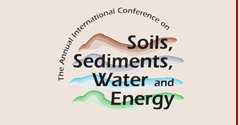Article Title
Abstract
ABSTRACT In our country, many different types of pesticides may be applied to cut flower crops in order to protect them. Two groups of these compounds, organophosphate (OP) and carbamate (CA) are used in high quantities. Both of them produce inhibition of cholinesterase activity in different organisms. This characteristic is used to identify the presence of these compounds with fast tube tests. On the other hand, some lixiviation models like PESTAN and others have been used in ecological risk assessment studies to get the Predicted Environmental Concentrations (PEC) of pesticides in soil. The aim of this research is to determine if PEC of several OP and CA compounds applied to a flower crop area, will show any correlation with inhibition of cholinesterase activity detected in soil extracts. Samples of surface soil (0 – 30 cm in depth) and subsurface soil (30 to 60 cm in depth) were taken from a flower crop area in which, during the last two years, OP pesticides (like acephate, dimetoate and methyl parathion), and CA pesticides (like carbendazim, carbofuran and metomil) were applied. Weekly loads of these pesticides were registered to estimate the annual load of each compound. Physicochemical analysis and relative inhibition of cholinesterasic activity were developed for each soil sampled. PEC values were estimated using PESTAN (US-EPA) lixiviation model for each pesticide considering the data of physicochemical analysis of each soil sampled. From all pesticides tested only acephate and metomilo showed a significant correlation (p < 0.01) between PEC values and inhibition cholinesterase activity of soil extracts. These results suggest that inhibition of cholinesterase activity observed in soil extracts is produced mainly by these two pesticides. Further studies could be oriented to measure concentrations of acephate and metomil to develop actions to reduce their environmental impact.
Recommended Citation
Sánchez-Meza, Juan C.; Avila-Pérez, Pedro; Borja-Salin, Manuel; Pacheco-Salazar, Víctor F.; and LaPoint, Tomas
(2010)
"Use of Biomarkers and Predicted Environmental Concentrations (PEC) to Select Relevant Pesticides Applied to Soil,"
Proceedings of the Annual International Conference on Soils, Sediments, Water and Energy: Vol. 15, Article 12.
Available at:
https://scholarworks.umass.edu/soilsproceedings/vol15/iss1/12
